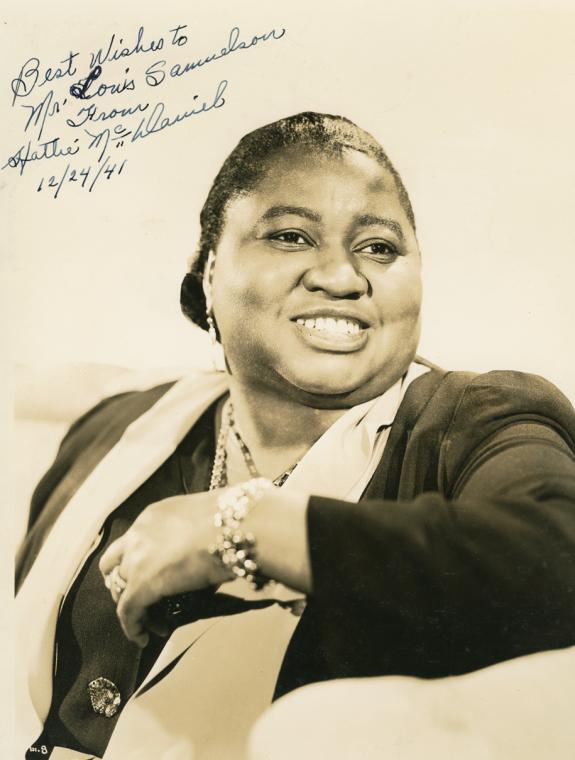Hattie McDaniel
The first African American to win an Academy Award once lived in Bronzeville.

McDaniel described herself as “a tourist from Milwaukee”...
Born in Wichita, Kansas on June 10th of 1893, Hattie McDaniel would have an illustrious career in show business. She was skilled in dance, acting, comedy, and singing on film, radio, and live stages. In addition to performing songs, she also wrote them. In 1925 she sang on the Denver radio station KOA, a performance often credited as being one of the first African woman singers to have performed on the radio. McDaniel was frequently booked by the Theatrical Owners Booking Association (TOBA), an organization made up of African American theatre owners. While playing the character of “Queenie” on a TOBA sponsored road production of the play “Showboat,” the company fell victim to the stock market crash in October of 1929, causing them to go bankrupt while the tour was in Chicago. This left McDaniel, along with other performers on the tour, stranded in the city. While there, she received word of an opportunity for work in Wisconsin at Sam Pick’s Club Madrid, located on the outskirts of Milwaukee. McDaniel moved to the African American community in Milwaukee, residing on 1640 N. 7th St.
Despite McDaniel’s immense talent as a vocalist and performing artist in musical theatre, barriers based on race resulted in her being initially hired as a washroom attendant. This would not last however, as she broke the color barrier and began to perform on stage. Her invigorating performances led to her gaining a large crowd of fans from “prestigious” communities in the Milwaukee area. In 1930, McDaniel took residence in the Sixth Ward of Milwaukee at 550 N. 17th St. Successfully performing for the “well-to-do” clientele at Club Madrid sparked people to suggest that she go to Hollywood and play on the big screen.
With support from her social base in Milwaukee, McDaniel took the journey to Hollywood, leading to an extensive career in movies. Although receiving on-screen credit for 83 movies, she actually appeared in over 300 films. McDaniel won the Academy Award for Best Supporting Actress for her role in Gone with the Wind in 1939, making her the first African American to win an Oscar. In 1947, she wrote an op-ed for the Hollywood Reporter, reflecting on her accomplished career. McDaniel shared the backstory prior to getting into movies, describing herself as “a tourist from Milwaukee” when she had initially arrived at the capital of the film industry, saying “Milwaukee was really my springboard to Hollywood.”
She has two stars on the Hollywood Walk of Fame. She was inducted into the Black Filmmakers Hall of Fame in 1975. In 2006 she became the first Black Oscar winner honored with a U.S. postage stamp. In 2010, she was inducted into the Colorado Women's Hall of Fame. Hattie McDaniel became an extremely decorated figure in the show business industry. Her time in living in Bronzeville played a pivotal role in her remarkable career.
Images


African American Activities in Industry, Government, and the Armed Forces Creator: Office for Emergency Management. Office of War Information. Domestic Operations Branch. News Bureau. Date: 1942